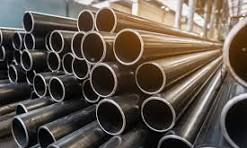Description
Stainless steel pipes are used in many industries due to their strength, resistance and appearance in many industries. Made from a mixture of iron and chromium (with other metals such as nickel), stainless steel pipes come in different grades, sizes and finishes, adapting to many types of applications, which ranges from plumbing to heavy industrial applications.
Key Features of Stainless Steel Pipes:
- Corrosion Resistance: Rust resistance: Stainless steel is very resistant to rust due to staining staining, rust and chromium, which creates a protective surface layer. This property suits the stainless steel pipe for use in corrosive atmosphere, such as marine, chemical and food processing applications.
- Strength and Durability: They have a high tensile strength, thus difficult even in high pressure. They oppose excessive temperature and physical stress.
- Aesthetic Appeal: They show a bright, contemporary look, usually used for decorative purposes such as railings, structural reinforcement and building designs.
- Flexibility: Stainless steel pipes are produced in diverse sizes and sizes, such as round, square and rectangular cross-sections, thus allowing design flexibility.
- Non-reactive with Food and Chemicals: Stainless steel is non-reactive, thus an appropriate material, pharmaceutical production and chemical processing for application in food industry and beverages.
Common Grades of Stainless Steel Pipes:
- 304 Stainless Steel Pipe: 304 stainless steel pipes: Plumbing, kitchen utensils and industrial piping are most widely used for general-purpose applications.
- 316 Stainless Steel Pipe: Known for its superior corrosion resistance, especially in saline (saltwater) environments. It is ideal for marine, chemical, and pharmaceutical applications.
- 321 Stainless Steel Pipe: This grade is often used in high-temperature applications and offers good resistance to corrosion and oxidation.
- Duplex Stainless Steel Pipe: Combines the properties of both austenitic and ferritic steels, offering high strength and corrosion resistance.
Types of Stainless Steel Pipes:
- Seamless Stainless Steel Pipes: These pipes are produced without welding, which gives them enhanced strength and pressure resistance. They are widely utilized in applications where the pipe will be subjected to high pressure, for example, in the oil and gas sector.
- Welded Stainless Steel Pipes: Such pipes are fabricated by joining two edges of a stainless steel strip or sheet using welding. They are less durable compared to seamless pipes, yet are inexpensive and widely applied to low-pressure pipelines, such as in heating and cooling systems as well as in plumbing systems.
- ERW (Electric Resistance Welded) Stainless Steel Pipes: ERW pipes are a type of welded pipe, and they are made by applying an electric current to weld the edges of steel. ERW pipes are commonly employed for smaller diameter pipes.
- Spiral Welded Stainless Steel Pipes: These are manufactured by welding a steel strip, which is coiled in the form of a spiral. Spiral welded pipes are employed in the case of industrial usage in larger diameter pipes.
- Sanitary Stainless Steel Pipes: They are specifically designed for use in applications needing a smooth and easy-to-clean surface, e.g., food and beverage processing.
Common Applications of Stainless Steel Pipes:
- Plumbing and Water Systems: Stainless steel tubes are widely used in domestic and commercial water distribution networks because they are resistant to corrosion and have an extended lifespan.
- Oil and Gas Industry: They are used extensively to carry oil, natural gas, and other liquids, particularly in high-pressure systems.
- Food and Beverage Industry: Stainless steel is favored for food-grade pipes as it does not get reacted with food or drinks and keeps hygiene and safety intact.
- Chemical Processing: The chemical industry relies on these pipes to transport aggressive chemicals, as stainless steel is resistant to corrosion from many acids and chemicals.
- Pharmaceuticals: They are used for transporting pharmaceutical substances because they are easy to clean and do not contaminate the products.
- Construction: They are used in structural applications, such as railings, columns, and supports, due to their strength, durability, and corrosion resistance.








Reviews
There are no reviews yet.